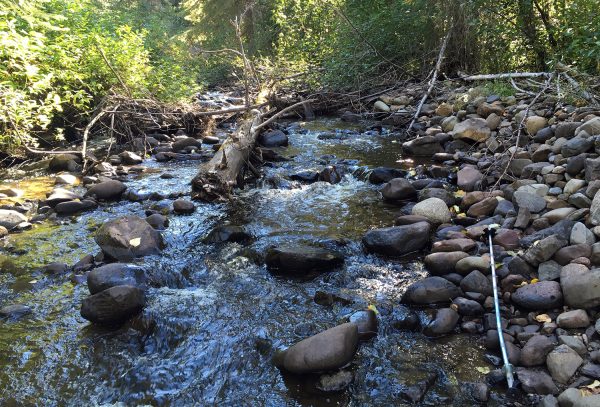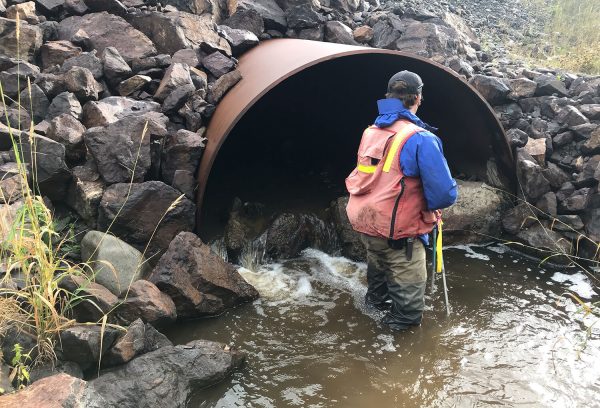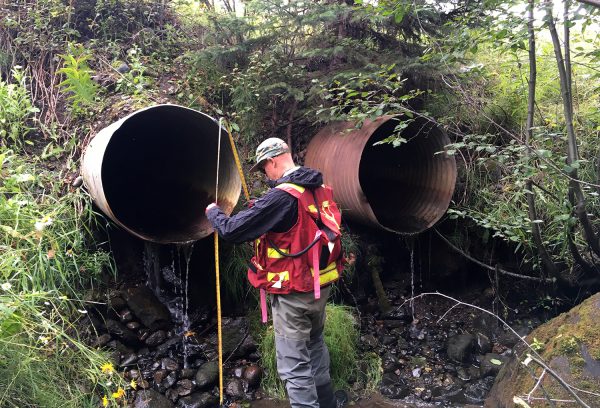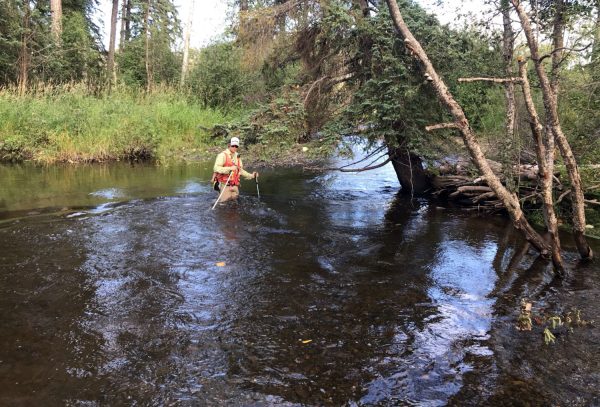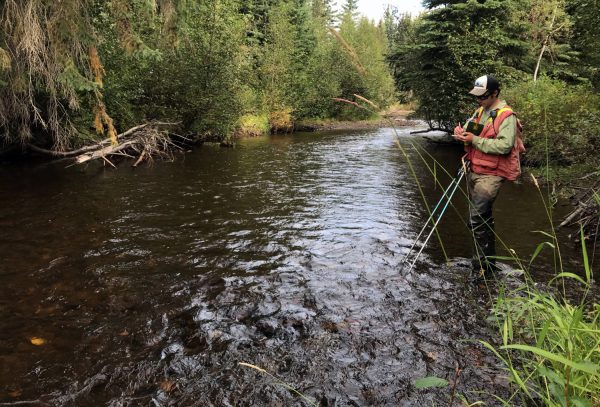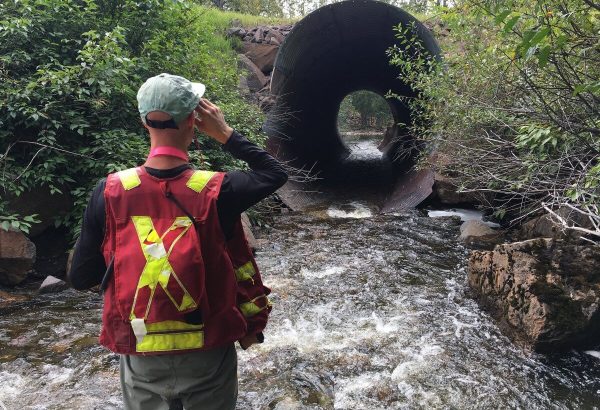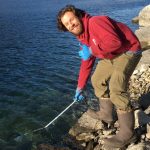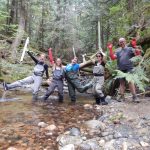Bulkley River Watershed Fish Passage Restoration
Author: Kyle Prince, LLC Program Coordinator
In late August/early September, Living Lakes Canada assisted completing fish passage assessments, fish habitat confirmation surveys, and fish sampling on high priority streams in the Bulkley Watershed near Smithers, B.C. This project leverages an incredible amount of work conducted by local groups, regulators, governments and individuals over many years including the Wet’suwet’en and Gitxsan First Nations on whose traditional territory the study area is located.
These efforts are very important to help identify where fish passage remediation initiatives could restore access to high quality upstream habitat, which has become inaccessible for fish species due to stream crossing developments like closed bottom structures (culverts) on resource roads, highways and railways. Culverts are notorious for restricting fish access due to increased water velocity, turbulence, a vertical drop at the outlet, and/or maintenance issues. The crossing assessment protocol documents the structure, and determines whether it is a “barrier” by using a scored system based on attributes such as embedment, stream width ratio, slope, length, and outlet drop.
The prioritized streams with moderate or higher habitat value are then surveyed downstream approximately 300 metres or to the next confluence, and upstream at least 600 metres. This confirms and further defines the quality of fish habitat present, documents any fish sighted, and ensures there are no other barriers, natural or anthropogenic in close proximity to the crossing that were not identified during the field preparation phase.
Fish sampling is being utilized at some sites to collect biological evidence of impacts from structures that potentially prevent migration. Aerial imagery is sometimes collected by remotely piloted aircrafts when survey conditions are difficult and/or when forest canopy conditions allow. The Bulkley Watershed contains multiple salmon species including coho, chinook, sockeye, steelhead and pink salmon. There are also cutthroat, bull trout, lamprey and numerous other species, and the watershed provides important spawning and rearing habitat, some of which is no longer accessible due to impassable crossings.
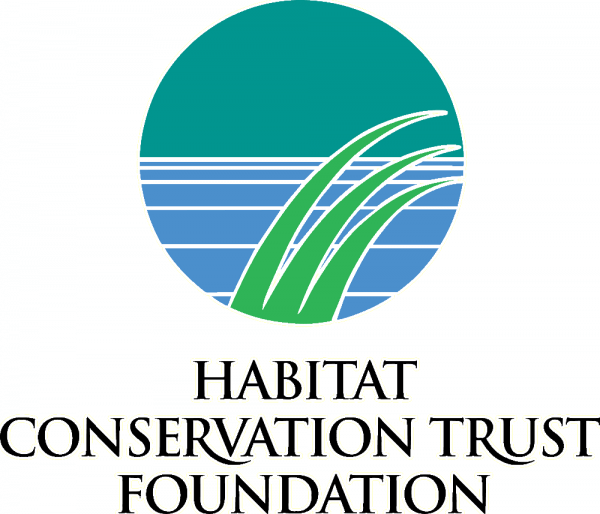 The project is currently led by the Society for Ecosystem Restoration in Northern BC (SERNbc) and is a collaboration between New Graph Environment, Hillcrest Geographics, Living Lakes Canada among others. The project was funded by the Habitat Conservation Trust Fund with support from the Provincial Fish Passage Remediation program and the Canadian Wildlife Federation. Contact Program Coordinator Kyle Prince with any questions: kyle@livinglakescanada.ca.
The project is currently led by the Society for Ecosystem Restoration in Northern BC (SERNbc) and is a collaboration between New Graph Environment, Hillcrest Geographics, Living Lakes Canada among others. The project was funded by the Habitat Conservation Trust Fund with support from the Provincial Fish Passage Remediation program and the Canadian Wildlife Federation. Contact Program Coordinator Kyle Prince with any questions: kyle@livinglakescanada.ca.


